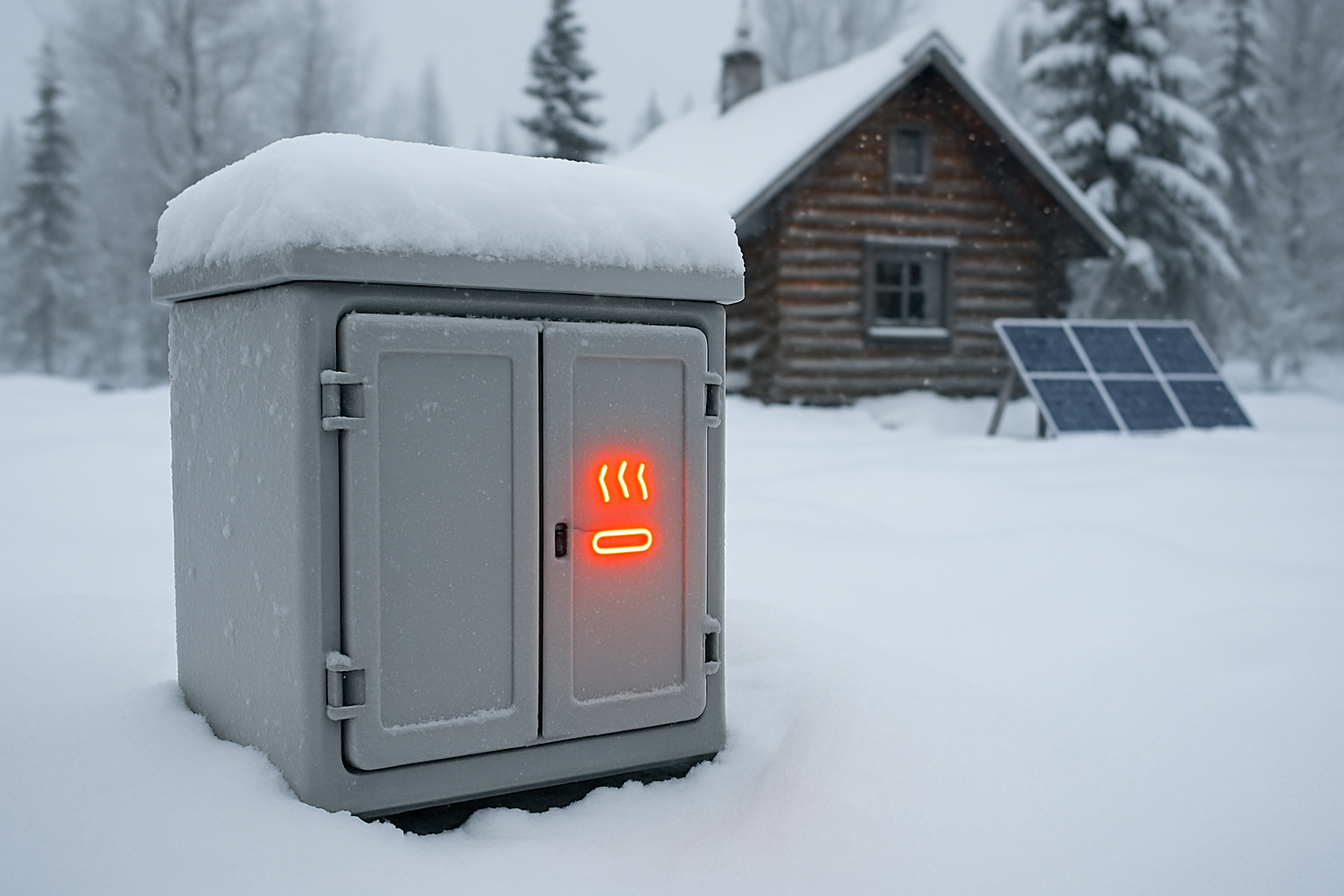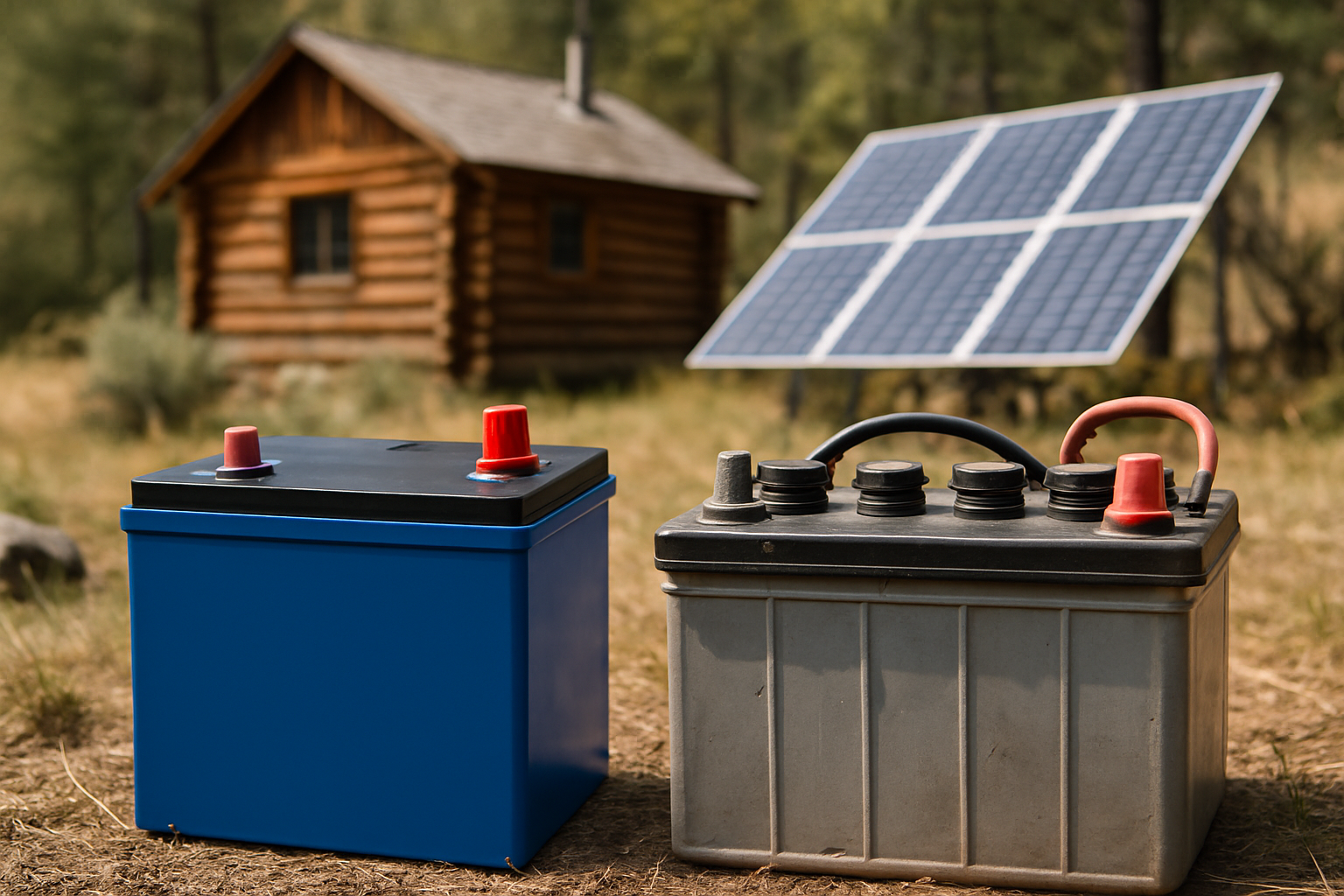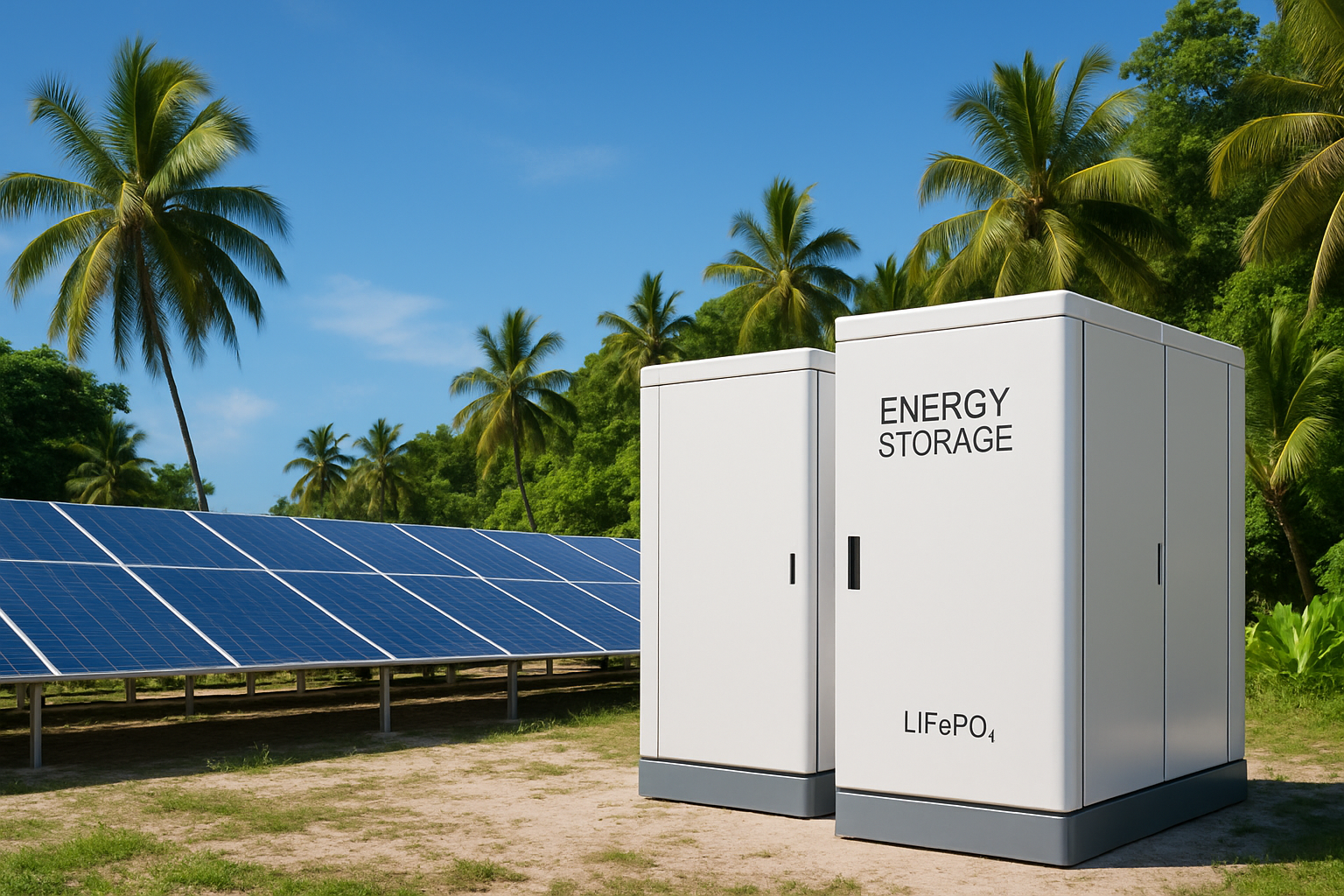Imagine your remote cabin, nestled in a pristine, snow-covered landscape. The silence is profound, broken only by the crackle of a wood fire. Your off-grid power system hums, providing warmth and light. This idyllic scene relies heavily on one critical component: your batteries. When temperatures plunge to -20C, these vital power sources face extreme challenges. Ensuring their survival and continued performance requires careful planning and strategic protection.
This guide offers practical insights and actionable steps for safeguarding your off-grid battery bank against the harshest winter conditions. You will learn how to maintain reliable power, extend battery life, and achieve true energy independence, even when the mercury drops far below freezing.

Understanding Cold Weather Battery Performance
Extreme cold significantly impacts battery performance, regardless of chemistry. Understanding these effects is the first step toward effective winterization.
The Impact of Low Temperatures on Battery Chemistry
As temperatures fall, the chemical reactions within a battery slow down. This leads to a noticeable reduction in available capacity. A battery rated for 100 amp-hours at 25C might deliver only 70-80 amp-hours at 0C, and even less at -20C. Internal resistance also increases, making it harder for the battery to deliver power efficiently. This means your system might struggle to meet peak loads, even if the battery appears to have charge.
For LiFePO4 (lithium iron phosphate) batteries, a popular choice for off-grid systems due to their long cycle life and safety, cold weather presents specific challenges. While they perform well in a wide temperature range, charging them below 0C can cause irreversible damage, known as lithium plating. This reduces capacity and can pose safety risks. Lead-acid batteries, while less susceptible to charging damage in cold, face the risk of electrolyte freezing if their state of charge drops too low. A fully charged lead-acid battery’s electrolyte freezes at a much lower temperature than a discharged one.
Why -20C is a Critical Threshold
-20C represents a severe test for any battery system. At this temperature, the performance degradation for most battery types becomes substantial. For LiFePO4, it is well below the safe charging limit, demanding active thermal management. For lead-acid, the risk of electrolyte freezing increases dramatically, especially if loads are high and charging is intermittent. Maintaining consistent power delivery at such extremes requires more than just passive measures; it often necessitates active heating and intelligent system management.
Strategic Protection: Insulation and Enclosures
Protecting your batteries from the biting cold often involves a combination of passive and active thermal management.
Passive Insulation Techniques
Insulation is your first line of defense. A well-insulated battery enclosure can significantly slow down heat loss, helping batteries retain their operating temperature for longer. Consider building a dedicated, insulated battery box using materials like rigid foam insulation or even placing batteries underground. The earth itself acts as a natural insulator, offering a more stable temperature environment. For example, burying batteries below the frost line can keep them at a relatively constant temperature, often above freezing, even when air temperatures are extremely low.
When designing an insulated enclosure, ensure proper ventilation. While insulation keeps cold out, batteries generate some heat during operation, especially when charging or discharging heavily. Adequate ventilation prevents overheating in milder conditions or during periods of high use, which can also damage batteries.
Active Heating Solutions for Extreme Cold
For temperatures consistently at or below -20C, passive insulation alone may not suffice. Active heating solutions become crucial. Low-power heating pads, often thermostatically controlled, can be placed directly on or around battery banks. These heaters activate only when temperatures drop below a set point, consuming minimal power. You might also integrate small, efficient space heaters within the enclosure, again controlled by a thermostat.
The key is to use the heating system strategically. For instance, you could program your system to utilize excess solar energy generated during the day to pre-heat the battery bank, ensuring it is ready for optimal performance during the colder night hours. The IRENA Innovation Outlook: Thermal Energy Storage (2020) highlights how thermal energy storage can enable winter heating demands to be met through stored energy, a principle adaptable to battery thermal management. This approach minimizes reliance on stored battery energy for heating, preserving it for cabin loads.
Optimizing Your Off-Grid System for Winter
Effective winterization extends beyond just physical protection; it involves smart system adjustments.
Battery Management System (BMS) Adjustments
For LiFePO4 batteries, the Battery Management System (BMS) is your most important ally in cold weather. A smart BMS will prevent charging when cell temperatures fall below 0C. You can often configure your BMS to include a low-temperature charge cut-off. This protects the battery from irreversible damage. Some advanced BMS units also manage cell balancing more effectively in varying temperatures, ensuring all cells in the bank perform uniformly.
Charging and Discharging Strategies
In cold conditions, adjust your charging parameters. Reduce charge rates to allow the battery to accept current more gradually. For lead-acid batteries, maintaining a higher State of Charge (SOC) is vital to prevent electrolyte freezing. A fully charged lead-acid battery is significantly more resistant to freezing than a discharged one. For LiFePO4, while freezing isn't an electrolyte issue, maintaining an optimal SOC (e.g., between 20-90%) helps manage overall battery health and efficiency in challenging conditions. Prioritizing critical loads during winter also conserves energy, ensuring essential systems remain operational.
System Sizing and Redundancy
Winter often brings shorter daylight hours and increased energy demand (for heating, lighting). Your off-grid system should account for this. Consider oversizing your battery bank and solar array to compensate for reduced solar irradiance and diminished battery capacity in the cold. Redundancy, such as a reliable backup generator or an additional, smaller battery bank for critical loads, offers peace of mind. The IRENA Electricity Storage Valuation Framework (2020) emphasizes the benefits of energy storage in off-grid contexts to increase renewable energy shares and reduce fossil fuel consumption, a goal further supported by robust winterization strategies.
Case Study: A Remote Cabin's -20C Battery Solution
Consider a remote cabin in a mountainous region, experiencing consistent winter temperatures of -20C and below. Initially, the cabin relied on a lead-acid battery bank, which frequently underperformed and suffered premature degradation due to the cold.
The owner upgraded to a LiFePO4 battery bank, known for its efficiency and longevity. To combat the extreme cold, a multi-pronged winterization strategy was implemented:
- Insulated Enclosure: The battery bank was housed in a custom-built, heavily insulated wooden enclosure, lined with R-30 rigid foam insulation. This enclosure was placed on a raised platform to minimize direct contact with the frozen ground.
- Active Heating: A small, thermostatically controlled 100-watt heating pad was installed beneath the battery bank. This pad activated only when the internal enclosure temperature dropped below 5C, ensuring the batteries remained above freezing for safe charging.
- BMS Configuration: The LiFePO4 battery's integrated BMS was configured with a strict 0C charge cut-off. This prevented any charging attempts when the battery temperature was too low, protecting the cells from damage.
- Optimized Charging: The solar charge controller was programmed to slightly reduce charge current during winter months, allowing for a gentler charge cycle.
This comprehensive approach transformed the cabin's energy reliability. The LiFePO4 batteries consistently delivered power, even during extended cold snaps. The active heating system, drawing minimal power, ensured the batteries were always ready to accept charge from the solar panels, maximizing energy capture. This case demonstrates that with careful planning and the right technology, reliable off-grid power is achievable in extreme cold.
Ensuring Long-Term Performance in Harsh Climates
Proactive care ensures your off-grid batteries serve you well for years, even in challenging environments.
Regular monitoring of battery voltage, current, and especially temperature is crucial. Many modern off-grid systems include monitoring tools that provide real-time data, allowing you to track performance and identify potential issues early. Conduct seasonal checks to inspect insulation, verify heater functionality, and ensure all connections are secure. Consider professional inspections every few years to assess battery health and system efficiency, especially before winter. These steps help prevent unexpected failures and extend the lifespan of your valuable energy storage assets.
Empowering Your Off-Grid Energy Independence
Conquering the challenges of -20C for your remote cabin batteries is a testament to thoughtful planning and robust solutions. By understanding the impact of cold, implementing strategic insulation and heating, and optimizing your system's settings, you safeguard your power supply. You ensure your off-grid home remains a sanctuary of warmth and light, regardless of the weather outside. This commitment to reliable, scalable energy solutions empowers you to truly achieve energy independence, even in the most demanding environments.
Frequently Asked Questions
What type of battery performs best in extreme cold?
While all batteries experience performance degradation in extreme cold, LiFePO4 batteries with an integrated heating system or robust external thermal management are generally preferred for off-grid applications in very cold climates. They offer a longer cycle life and higher efficiency than lead-acid, provided they are kept above freezing for charging. Lead-acid batteries can operate in cold, but their capacity drops significantly, and they risk electrolyte freezing if discharged too deeply.
Can I charge LiFePO4 batteries below freezing?
No, you should not charge LiFePO4 batteries below 0C (32F). Charging at sub-freezing temperatures can cause lithium plating, which permanently damages the battery, reduces its capacity, and can create safety hazards. A Battery Management System (BMS) with a low-temperature charge cut-off is essential for LiFePO4 batteries used in cold environments. Active heating solutions ensure the battery cells are warm enough to safely accept a charge.
How much power does a battery heater consume?
The power consumption of a battery heater varies widely based on its size, efficiency, and the ambient temperature. Small heating pads for individual batteries might consume 20-50 watts, while larger heaters for entire battery banks could use 100-300 watts or more. Thermostatic control is vital to minimize consumption, as the heater only activates when necessary. You should factor this power draw into your overall energy budget, especially during periods of low solar generation.
Is it better to bury batteries for cold protection?
Burying batteries can be an effective passive insulation strategy, as the ground temperature remains more stable than the air temperature. Below the frost line, temperatures often stay above freezing, even in very cold climates. However, burying batteries requires careful consideration of moisture protection, ventilation, and accessibility for maintenance. It is often best suited for lead-acid batteries, as LiFePO4 still requires a more precise temperature range for charging, which might necessitate supplemental heating even when buried.





Leave a comment
All comments are moderated before being published.
This site is protected by hCaptcha and the hCaptcha Privacy Policy and Terms of Service apply.